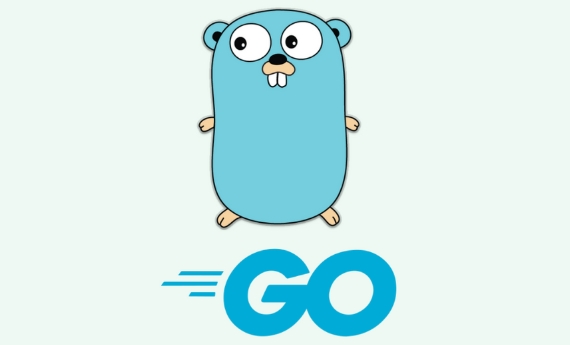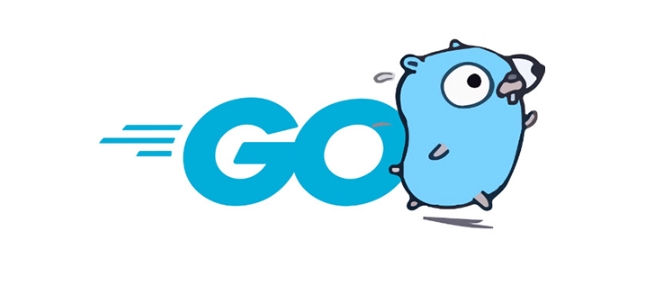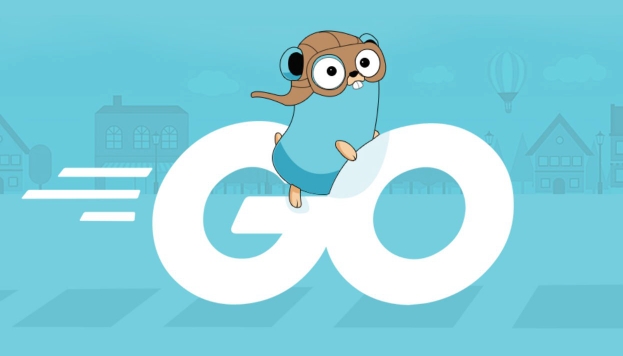//go:embed will not increase the binary volume itself, but the embedded files will directly increase the volume. 1. Using //go:embed will compile the file contents (such as HTML, JSON, images, etc.) into a binary file, resulting in an increase in volume that is comparable to the size of the embedded file. 2. The instruction itself has no additional overhead, and the volume growth depends entirely on the amount of data embedded. For example, embedding 5 MB of JavaScript files will increase the binary file by about 5 MB. 3. The impact can be evaluated by comparing the binary sizes before and after the build (such as using go build and ls -lh) or using go tool nm to check the data segment. 4. To reduce the impact, embedding large files (such as videos, uncompressed resources) should be avoided, compression is preferred (such as minimizing HTML/CSS/JS), and consider embedding in production environments and loading externally in development using build tags. 5. The trade-off is: //go:embed improves deployment convenience and eliminates runtime I/O errors, but at the cost of getting bigger binary, starting slower, and possibly containing unused resources. In short, //go:embed itself does not cause expansion, and volume growth is entirely determined by the embedding file. Embedding for small or medium resources (such as configuration, templates, static interfaces) is a reasonable choice, while for large resources, it needs to be carefully evaluated or pre-optimized.

Using Go's //go:embed directly doesn't inherently bloat your binary size more than other ways of including data — but it does embed files directly into the binary, so the impact depends on what you're embedding and how you're using it.

Here's what you need to know:
? //go:embed adds file contents to the binary
When you use //go:embed , the content of the specified files (like HTML, JSON, images, etc.) is compiled directly into the executable. This means:

- The binary size increases by roughly the size of the embedded files.
- No external files are needed at runtime — everything is self-contained.
For example:
//go:embed templates/* var templatesFS embedded.FS
All files in the templates/ directory are now part of the binary.

? Binary size impact: It's about the data, not the directive
The //go:embed directive itself adds no overhead. The size increases come entirely from the files you embed .
| Embedded Content | Size Impact |
|---|---|
| 10 KB of JSON | ~ 10 KB |
| 1 MB image | ~ 1 MB |
| Static site (HTML/CSS) | Can add several MB |
So if you embed a 5 MB JavaScript bundle, your binary will be ~5 MB larger — whether you use embed.FS , go:generate , or a third-party tool.
? How to check the impact
You can compare binary sizes before and after embedding:
# Build without embedded assets go build -o app-no-assets . # Build with embedded assets go build -o app-with-assets . # Compare sizes ls -lh app-*
Also, use go tool nm or objdump to see if large strings or data sections were added.
? Tips to minimize impact
If binary size matters (eg, for microservices, CLI tools, or cold starts in serverless):
- Avoid embedding large files like videos, big images, or unminified JS/CSS.
- Compress assets if possible (eg, minify HTML/CSS/JS before embedding).
- Use build tags to create "lite" versions without embedded assets in development:
//go:embed production-assets/* // build release
- Consider loading assets externally in dev , but embedded only in production builds.
- ? Simpler deployment
- ? No I/O errors loading templates/assets
- ? Larger binary
- ? Slower startup if loading huge embedded FS
- ? Binary may contain unused assets
?? Trade-offs: Convenience vs. Size
//go:embed makes deployment easier — one binary, no dependencies. But you pay with size.
It's a classic trade-off:
Bottom line
//go:embed doesn't add bloat by itself — it just includes your files.
The bigger the files you embed, the bigger your binary.
So: embed wisely. For small to modern assets (configs, templates, static UI), it's perfectly fine. For large media or bundles, think twice — or optimize them first.
Basically: you get exactly what you ask for — no magic, no hidden tax, just your files in the binary.
The above is the detailed content of How does go embed affect my binary size?. For more information, please follow other related articles on the PHP Chinese website!

Hot AI Tools

Undress AI Tool
Undress images for free

Undresser.AI Undress
AI-powered app for creating realistic nude photos

AI Clothes Remover
Online AI tool for removing clothes from photos.

Clothoff.io
AI clothes remover

Video Face Swap
Swap faces in any video effortlessly with our completely free AI face swap tool!

Hot Article

Hot Tools

Notepad++7.3.1
Easy-to-use and free code editor

SublimeText3 Chinese version
Chinese version, very easy to use

Zend Studio 13.0.1
Powerful PHP integrated development environment

Dreamweaver CS6
Visual web development tools

SublimeText3 Mac version
God-level code editing software (SublimeText3)

Hot Topics
 Understanding the Performance Differences Between Golang and Python for Web APIs
Jul 03, 2025 am 02:40 AM
Understanding the Performance Differences Between Golang and Python for Web APIs
Jul 03, 2025 am 02:40 AM
Golangofferssuperiorperformance,nativeconcurrencyviagoroutines,andefficientresourceusage,makingitidealforhigh-traffic,low-latencyAPIs;2.Python,whileslowerduetointerpretationandtheGIL,provideseasierdevelopment,arichecosystem,andisbettersuitedforI/O-bo
 Is golang frontend or backend
Jul 08, 2025 am 01:44 AM
Is golang frontend or backend
Jul 08, 2025 am 01:44 AM
Golang is mainly used for back-end development, but it can also play an indirect role in the front-end field. Its design goals focus on high-performance, concurrent processing and system-level programming, and are suitable for building back-end applications such as API servers, microservices, distributed systems, database operations and CLI tools. Although Golang is not the mainstream language for web front-end, it can be compiled into JavaScript through GopherJS, run on WebAssembly through TinyGo, or generate HTML pages with a template engine to participate in front-end development. However, modern front-end development still needs to rely on JavaScript/TypeScript and its ecosystem. Therefore, Golang is more suitable for the technology stack selection with high-performance backend as the core.
 How to build a GraphQL API in golang
Jul 08, 2025 am 01:03 AM
How to build a GraphQL API in golang
Jul 08, 2025 am 01:03 AM
To build a GraphQLAPI in Go, it is recommended to use the gqlgen library to improve development efficiency. 1. First select the appropriate library, such as gqlgen, which supports automatic code generation based on schema; 2. Then define GraphQLschema, describe the API structure and query portal, such as defining Post types and query methods; 3. Then initialize the project and generate basic code to implement business logic in resolver; 4. Finally, connect GraphQLhandler to HTTPserver and test the API through the built-in Playground. Notes include field naming specifications, error handling, performance optimization and security settings to ensure project maintenance
 How to install Go
Jul 09, 2025 am 02:37 AM
How to install Go
Jul 09, 2025 am 02:37 AM
The key to installing Go is to select the correct version, configure environment variables, and verify the installation. 1. Go to the official website to download the installation package of the corresponding system. Windows uses .msi files, macOS uses .pkg files, Linux uses .tar.gz files and unzip them to /usr/local directory; 2. Configure environment variables, edit ~/.bashrc or ~/.zshrc in Linux/macOS to add PATH and GOPATH, and Windows set PATH to Go in the system properties; 3. Use the government command to verify the installation, and run the test program hello.go to confirm that the compilation and execution are normal. PATH settings and loops throughout the process
 Resource Consumption (CPU/Memory) Benchmarks for Typical Golang vs Python Web Services
Jul 03, 2025 am 02:38 AM
Resource Consumption (CPU/Memory) Benchmarks for Typical Golang vs Python Web Services
Jul 03, 2025 am 02:38 AM
Golang usually consumes less CPU and memory than Python when building web services. 1. Golang's goroutine model is efficient in scheduling, has strong concurrent request processing capabilities, and has lower CPU usage; 2. Go is compiled into native code, does not rely on virtual machines during runtime, and has smaller memory usage; 3. Python has greater CPU and memory overhead in concurrent scenarios due to GIL and interpretation execution mechanism; 4. Although Python has high development efficiency and rich ecosystem, it consumes a high resource, which is suitable for scenarios with low concurrency requirements.
 Go sync.WaitGroup example
Jul 09, 2025 am 01:48 AM
Go sync.WaitGroup example
Jul 09, 2025 am 01:48 AM
sync.WaitGroup is used to wait for a group of goroutines to complete the task. Its core is to work together through three methods: Add, Done, and Wait. 1.Add(n) Set the number of goroutines to wait; 2.Done() is called at the end of each goroutine, and the count is reduced by one; 3.Wait() blocks the main coroutine until all tasks are completed. When using it, please note: Add should be called outside the goroutine, avoid duplicate Wait, and be sure to ensure that Don is called. It is recommended to use it with defer. It is common in concurrent crawling of web pages, batch data processing and other scenarios, and can effectively control the concurrency process.
 Evaluating Code Readability and Maintainability: Golang vs Python Perspectives
Jul 03, 2025 am 02:40 AM
Evaluating Code Readability and Maintainability: Golang vs Python Perspectives
Jul 03, 2025 am 02:40 AM
WhenchoosingbetweenGolangandPythonforcodereadabilityandmaintainability,thedecisionhingesonteampriorities.1.Golangoffersstrictconsistencywithminimal,opinionatedsyntaxandbuilt-intoolinglikegofmt,ensuringuniformcodestyleandearlyerrordetection.2.Pythonpr
 Go embed package tutorial
Jul 09, 2025 am 02:46 AM
Go embed package tutorial
Jul 09, 2025 am 02:46 AM
Using Go's embed package can easily embed static resources into binary, suitable for web services to package HTML, CSS, pictures and other files. 1. Declare the embedded resource to add //go:embed comment before the variable, such as embedding a single file hello.txt; 2. It can be embedded in the entire directory such as static/*, and realize multi-file packaging through embed.FS; 3. It is recommended to switch the disk loading mode through buildtag or environment variables to improve efficiency; 4. Pay attention to path accuracy, file size limitations and read-only characteristics of embedded resources. Rational use of embed can simplify deployment and optimize project structure.






